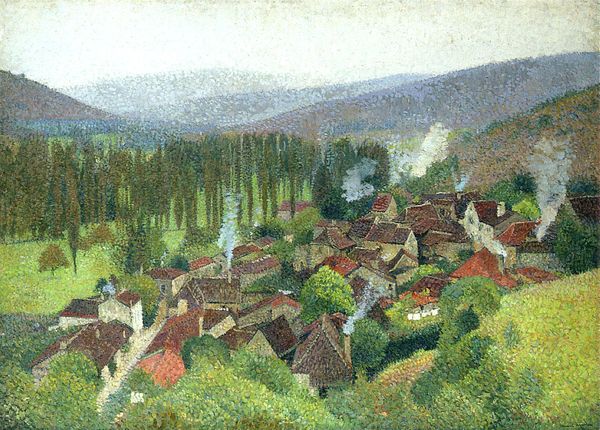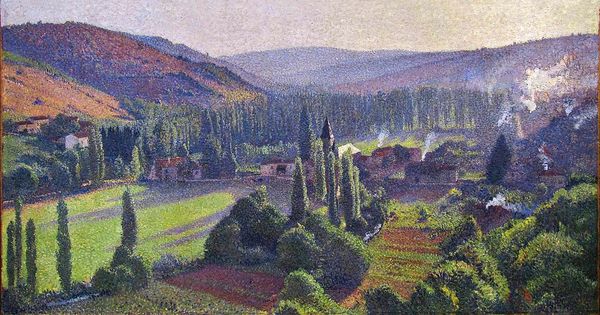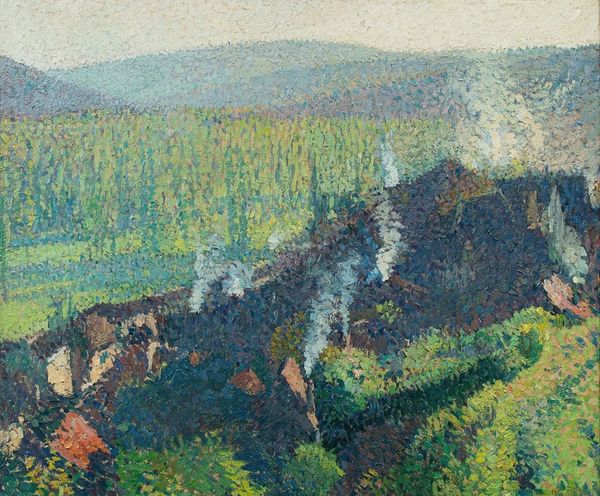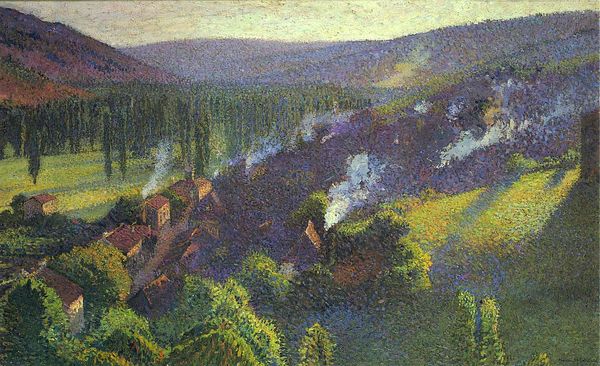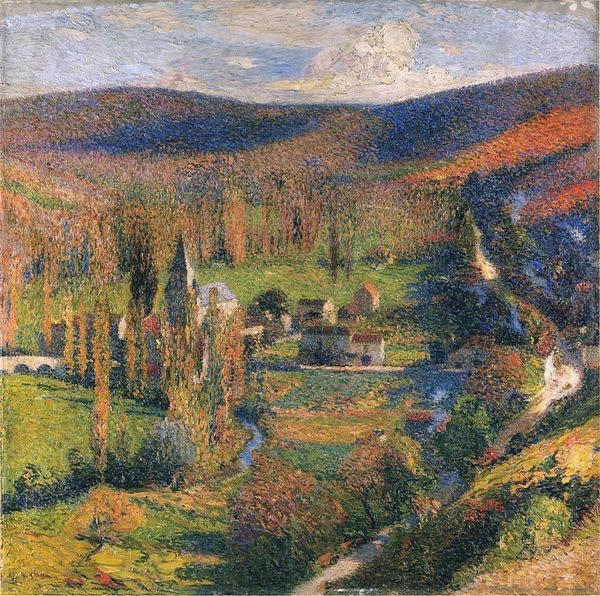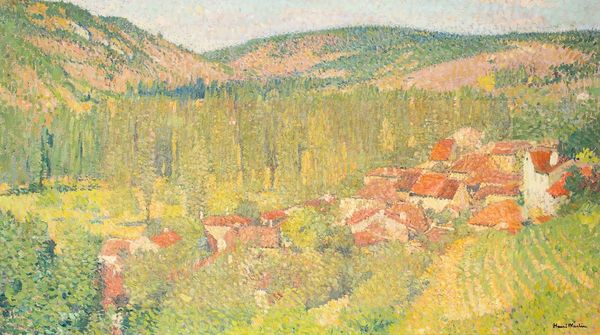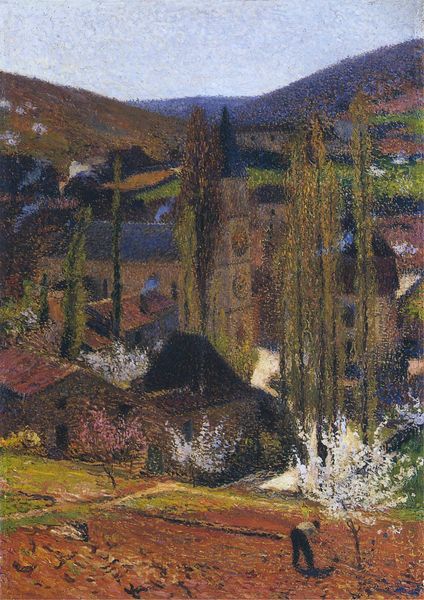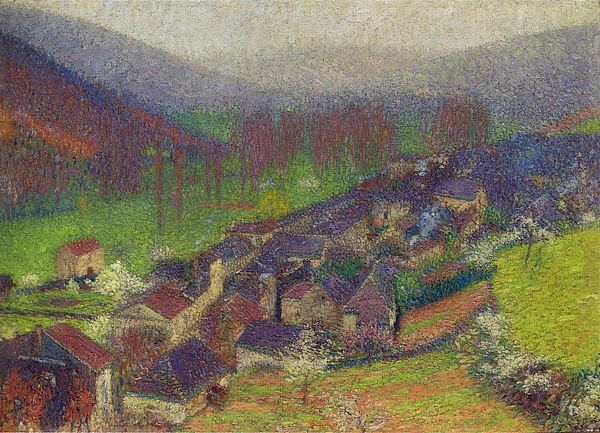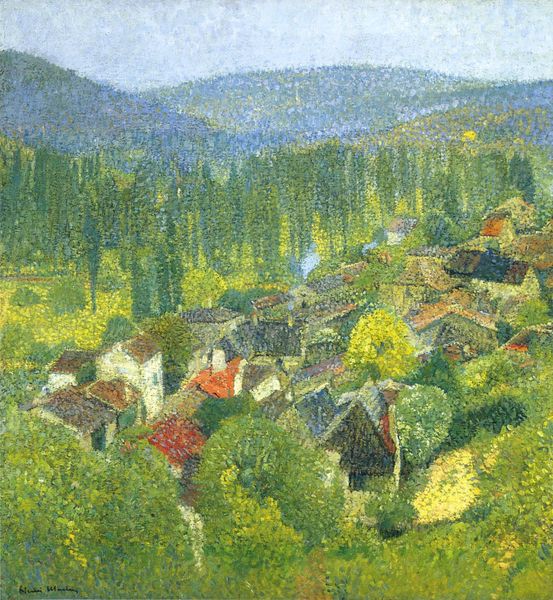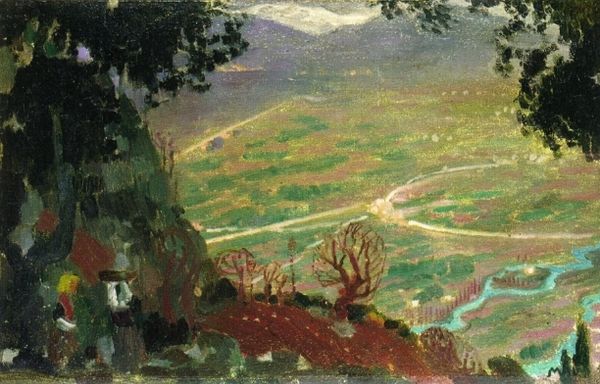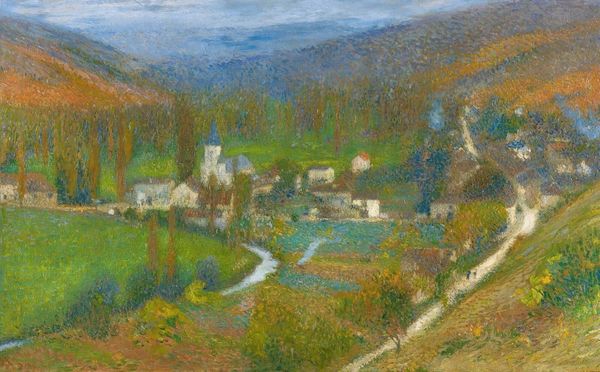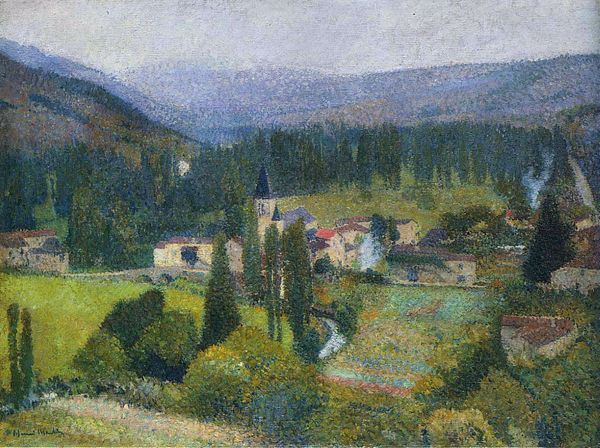
Copyright: Public Domain: Artvee
Editor: Here we have Henri Martin’s "La vallée du vert à Labastide-du-Vert," created around 1920 using oil paint. The overall impression is one of peaceful, almost hazy, tranquility. What layers of meaning or interpretations can you draw from this work? Curator: This landscape, built from tiny dots of color in a post-Impressionistic style, whispers of its historical moment. Consider the early 20th century—a time of immense social upheaval, particularly in France with its colonial past. The idealized rural scene can be read, perhaps, as a nostalgic longing for a simpler, untainted existence, one removed from the anxieties of modern, industrialized society. Do you see how the broken color, almost dissolving form, could reflect a fracturing sense of national identity? Editor: That's a fascinating perspective. I hadn't considered the connection to social anxieties. I was mostly focused on the visual harmony. So the choice of this idyllic scene and the pointillist technique, they weren’t just artistic choices, but potentially a commentary on French society at the time? Curator: Precisely. Martin isn't simply painting a pretty picture; he's engaging, perhaps subconsciously, with complex questions of national identity and collective memory. Consider who is represented here—and who is absent. This valley appears untouched, pristine, almost as if the social struggles of the time have been conveniently erased. Editor: So it's idyllic, but maybe also…evasive? Curator: Precisely! And it’s vital that we acknowledge these complexities to avoid perpetuating a one-dimensional view of art history. What began as something seemingly pastoral transforms into something far more profound. Editor: This really changes how I see the painting. I appreciate how this context enriches the initial viewing experience! Curator: Absolutely, it makes the picture so much more potent.
Comments
No comments
Be the first to comment and join the conversation on the ultimate creative platform.
